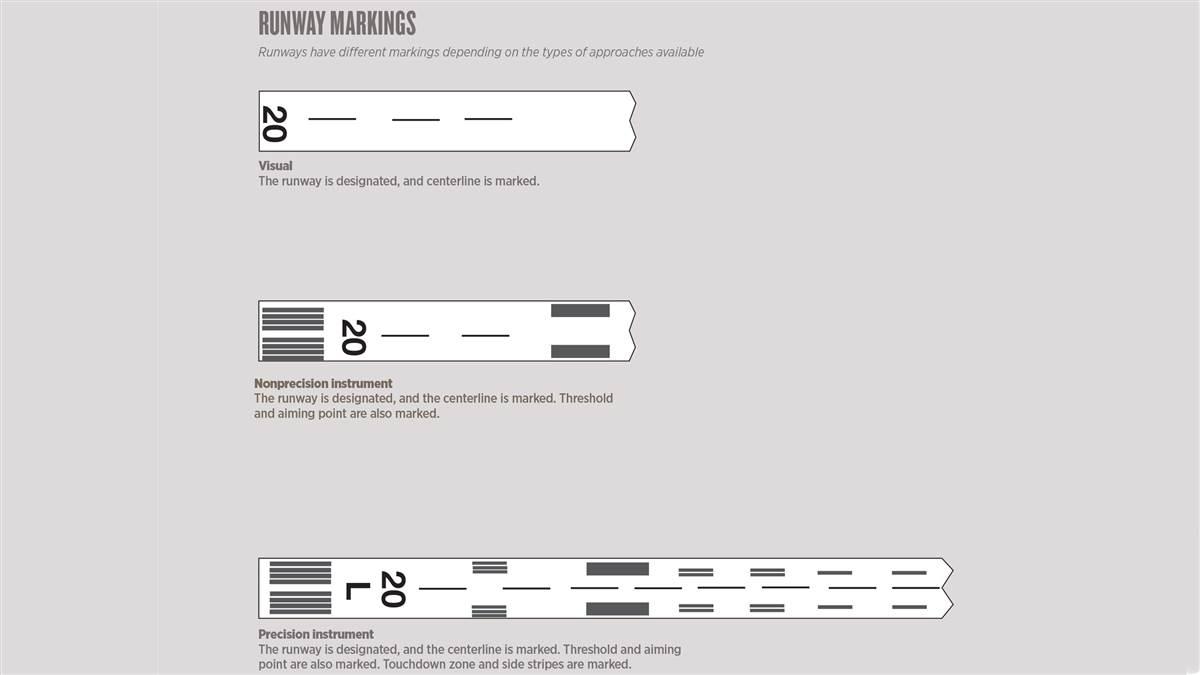What Am I: Runway and taxiway markings
White for flight, yellow not quite
—The Student Pilot’s Flight Manual by William K. Kershner”

White is highly visible against dark asphalt, so it is the obvious choice to use for markings on roads and highways to provide guidance and keep drivers safe. Same for runways. White markings indicate runway information; the runway number and centerline are painted white. Yellow indicates taxiways and holding positions. Think of it as white, take flight; yellow, not quite.
Runway designators identify the runway by its magnetic orientation and, if it’s a parallel runway, a letter. The centerline provides alignment guidance for takeoff and landing, and runway threshold markings help identify the pavement available for landing. Threshold markings also tell runway width; more stripes indicate a wider runway. On some runways, aiming points are positioned about 1,000 feet from the landing threshold. Touchdown zone and side stripe markings are present on runways with precision instrument approaches.
Taxiways have yellow markings that may include centerline, runway holding position, edge, shoulder, holding position, and taxiway intersection markings. Holding position markings indicate where aircraft must stop when approaching a runway. They are yellow, even when on a runway.
Learn more about airport markings in the AOPA Air Safety Institute’s Runway Safety flash cards.
Web: www.airsafetyinstitute.org/eflashcards/runwaysafety



